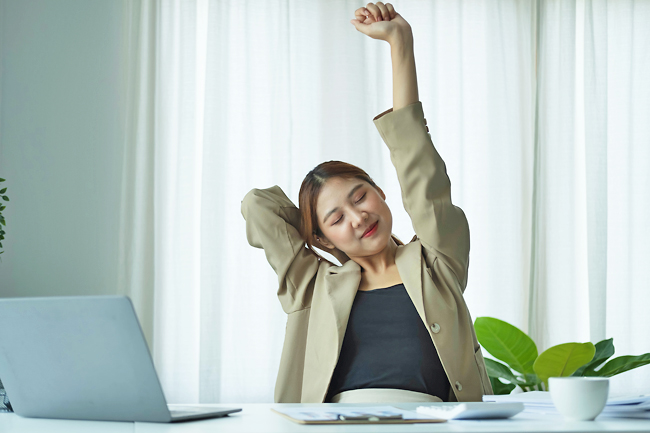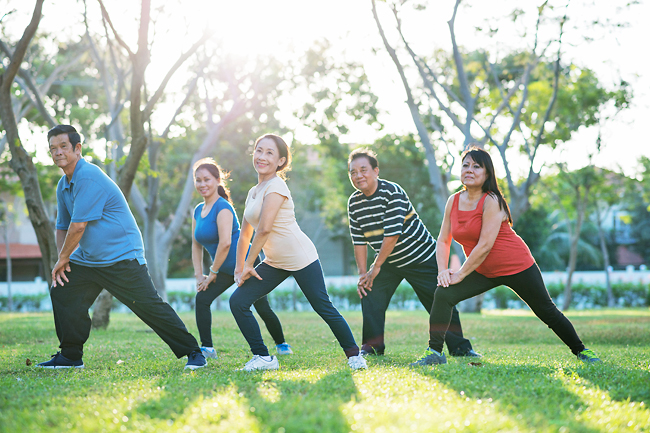CNA/THE NEW YORK TIMES – Bending down to put on your socks. Looking over your shoulder to change lanes when driving. Reaching up to pluck a box of cereal from a high shelf at the grocery store.
When most of us think about flexibility, we imagine a yogi with their legs wrapped around their heads or a ballet dancer doing the splits.
The truth is, there are countless everyday movements that require flexibility. And being able to do them takes maintenance.
“Flexibility is very much a case of use it or lose it,” said flexibility coach and educator Dan Van Zandt. Instead of shying away from movements that are painful, Van Zandt said, you can work on your flexibility and improve your range of motion.
Even though most of us won’t ever become flexible enough to do the splits, with time and patience we can squat a little deeper, reach a little higher and maybe even sit cross-legged on the floor.
FLEXIBILITY AND MOBILITY CAN BE CULTIVATED
Flexibility and mobility are different but related concepts, said Andrew Pavlov, an orthopaedic physical therapist and a faculty member at San Diego State University.
Flexibility describes the ability of your muscles to lengthen or stretch, and mobility refers to the ability of your joints to move through its full range of motion, Dr Pavlov said.


Combined, a lack of flexibility and mobility make things like stretching to pluck something off a high shelf or reaching down to pull a weed in your yard difficult and sometimes even painful.
Flexibility and mobility are skills to be cultivated, like strength and cardiovascular endurance.
And like those skills, they can improve your quality of life. Some small studies suggest that being more flexible is linked to improved sleep and less pain, as well as a lower risk of depression.
According to LaDora Thompson, a professor in the department of physical therapy at Boston University, maintaining an optimal range of motion in your joints is also associated with good balance, strength and walking speed.
And, of course, improving your ability to move smoothly and without pain simply makes many everyday tasks easier. “As you get older, as you stop getting into these positions that were once easy,” Van Zandt said, “then you lose function, your quality of life becomes impaired”.
TEST YOUR FLEXIBILITY WITH FIVE SIMPLE STRETCHES
Gauging your own flexibility isn’t simply a matter of bending over and touching your toes, though that is one good test. Our bodies move and bend in many ways, and you’ll need to try a few different tests if you want a comprehensive assessment.
It’s also important to know that with flexibility, you can have too much of a good thing.
About 20 per cent of the population is hypermobile, which means their joints move beyond the typical range. It’s not a cause for concern unless one experiences pain or has recurring injuries.
However, if you are extremely flexible, doctors and physical therapists recommend shifting your focus from stretching to building strength in order to stabilise and protect your joints:
Back, hips and hamstrings – Theresa Larson, a physical therapist and expert on movement health, recommended beginning your flexibility assessment with a simple toe touch. Start by standing up with your legs straight, then bend over and touch your toes.
If you can touch your toes while keeping your legs straight, Dr Larson said, you probably have a good amount of flexibility in your lower back, hips and hamstrings.
If you can only reach your knees, that’s a possible sign of tight hamstrings, stiff hip joints or perhaps pre-existing spinal injuries.
Some people can put their palms flat on the floor while keeping their legs straight. This might be a sign of hypermobility, or you might simply have long arms. Conversely, those with short arms might never be able to touch their toes, no matter how flexible they become.
Neck – To evaluate the flexibility of your neck, sit in a chair or on the floor and turn your head to one side. You should be able to get your chin almost in line with your shoulder, about 90 degrees.
Many of our daily activities, including looking down at a phone or leaning over a computer, can cause neck stiffness that interferes with flexibility.
Thoracic spine – You can test the flexibility of the upper and middle part of your back by gauging your thoracic spine rotation, Dr Larson said, with a stretch called the open book.
Start by lying on your side with your legs and feet together, knees bent. Straighten both arms in front of you and slowly rotate your top arm open, keeping your lower arm, pelvis and legs still.
See how far you can rotate your arm. If you can “open the book” or touch your top arm to the floor behind you without moving your legs, you have adequate flexibility in your
upper back. If you can’t get your arm to the floor, that might be a good place to focus your stretches.
Calves and ankles – Tight calves and ankles can cause Achilles tendinitis, plantar fasciitis and impact your walking gait, which can lead to injury.
To test these, start by facing a wall with your toes touching the wall. Step one foot back slightly, holding onto the wall for balance if needed, and keep the other foot planted.
If it’s easier, drop down onto your knee with the back foot. Then let your front knee come forward to touch the wall.
“If you’re able to touch the wall with your knee – without the heel popping up on that front foot – then move yourself slightly back away from the wall and keep going.
See how far away from the wall you can get and still touch your knee to the wall without your heel popping up,” Dr Pavlov said.
Next, get out a ruler or measuring tape. If you can move your front foot back four inches (about 10cm) away and still touch your knee to the wall, Dr Pavlov said, you have a good amount of flexibility in your calf and ankle. If not, you should focus on stretching your calves and ankles.
Hips – The final test evaluates the external rotation of your hips, which can become very tight if you sit for most of the day.
Start by lying on your back with your right foot on the ground, knee bent.
Bring the left ankle to the top of your right knee and, using your hands, lift your right leg off the ground.
Reach for your hamstring or shin as you bring your right leg closer to your chest. Repeat on the other side. If you can’t reach your hamstring with your hands, that’s a sign you have tightness in your hips.
HOW CAN YOU BECOME MORE FLEXIBLE?
If any of these tests revealed a lack of flexibility, a good place to start is by turning that movement into a regular stretch.
For example, if you weren’t able to get your arm to the floor in the open book stretch, perform the stretch until you feel resistance.
Then spend about 30 seconds slowly and carefully moving your arm a little bit closer to the floor.
“Eventually you’ll find the point at which the discomfort gets farther and farther into the range of motion,” Van Zandt said.
Stretching doesn’t have to be time-consuming. Van Zandt said five to 10 minutes per week per muscle group is optimal for most people. This can be a single five-minute stretch or a few sets of 30-second stretches three to four days a week.
Avoid stretching cold muscles by stretching after a workout, or warm up your muscles for five to 10 minutes beforehand.
If you enjoy lifting weights and dislike stretching, you can work on both at the same time by moving through the full range of motion in your workouts, like squatting with a barbell as low as your strength and flexibility allow to improve your calf and ankle flexibility.
“The way you train it is entirely up to you,” Van Zandt said. “You can lift weights, you can stretch, you can do a combination of both.” He added that combining tends to be the most effective.
Lindsay Renteria, a personal trainer and functional fitness coach, recommended the Samson stretch for its efficiency.
This stretch – a lunge forward with one leg, hands clasped overhead, alternating legs after 30 seconds – targets your quads, glutes, hamstrings, hip flexors and even shoulders.
The most important thing to focus on while you’re stretching, said Renteria, is your breathing. While you stretch, take a deep breath in for two or three seconds, then out for two or three seconds.
“Breathing helps reduce stress and relaxes your body so your muscles can go through a full range of motion.”





